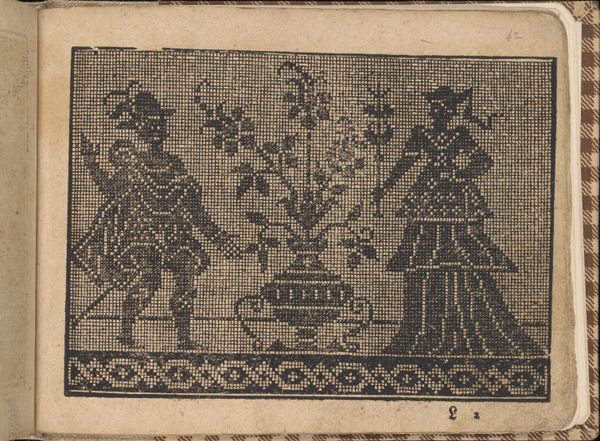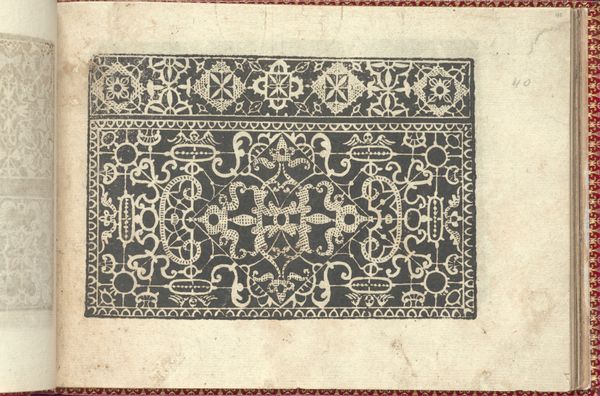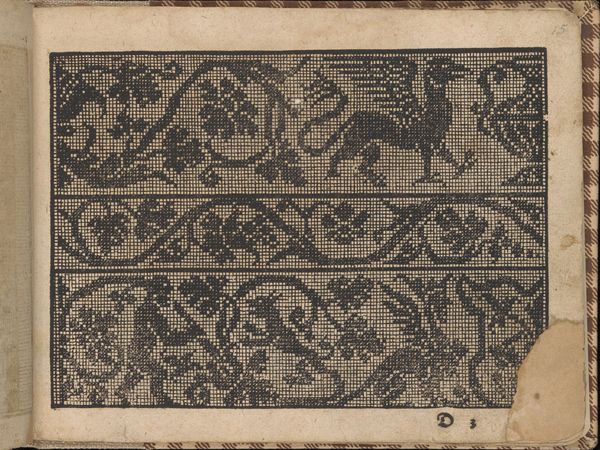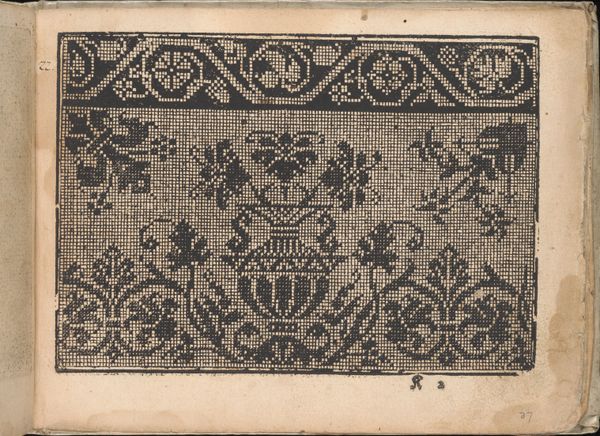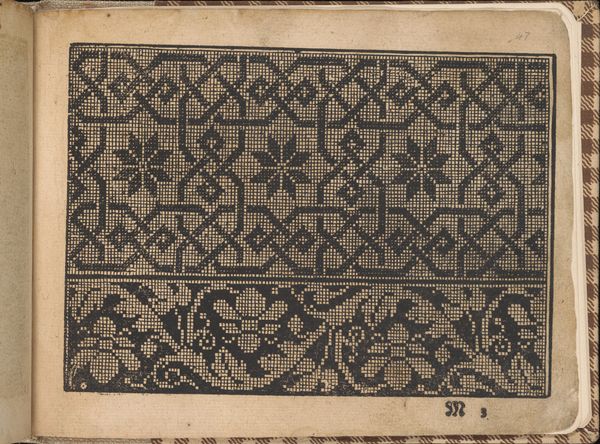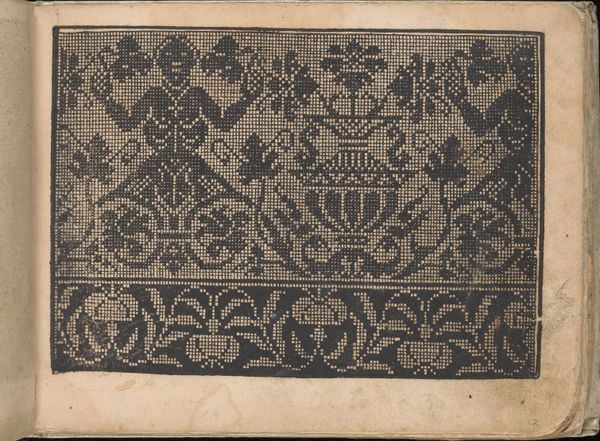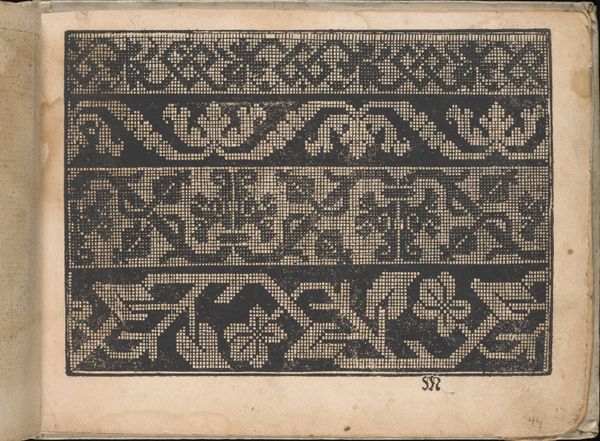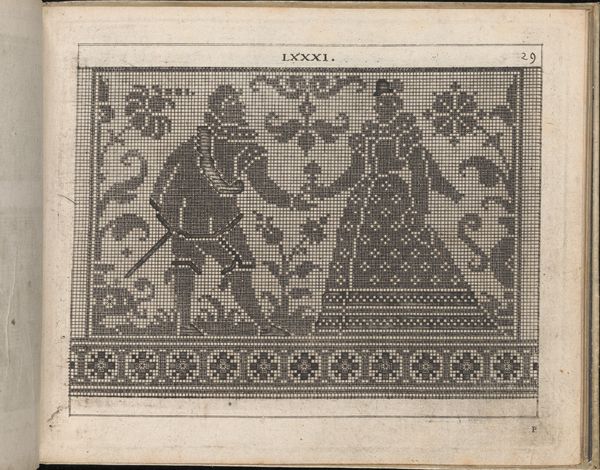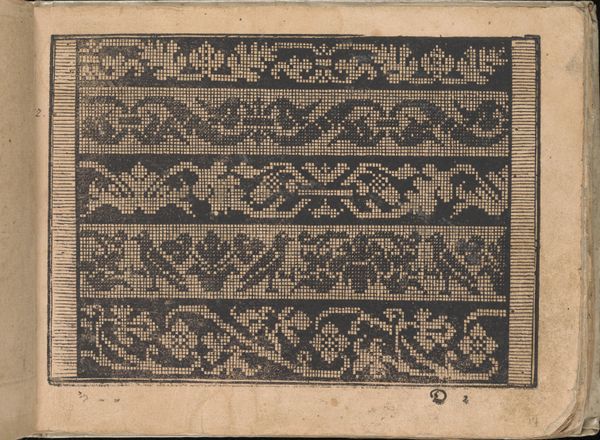
drawing, print, woodcut
#
portrait
#
drawing
# print
#
figuration
#
woodcut
#
northern-renaissance
Dimensions: Overall: 6 1/8 x 7 7/8 in. (15.5 x 20 cm)
Copyright: Public Domain
Editor: Here we have a page from Bernhard Jobin's "Neu künstlich Modelbuch," created in 1598. It’s a woodcut print depicting a man, a woman, and a stylized plant. It looks like an early pattern book. What can you tell me about it? Curator: Considering this "Modelbuch," it's fascinating to see how printed images circulated and were used in 16th-century Europe. This isn't just a drawing; it's a template. The grid-like structure imitates textile patterns meant for replication in embroidery or other crafts. This image makes me think of questions: Who was producing these patterns, and for what audiences? Was this aimed at a domestic market or something more professional? Editor: That’s interesting. I was thinking of it as a piece of art, but I see it’s really a guide to *making* things, perhaps like a contemporary craft how-to. What would someone actually use it to make? Curator: Precisely. The “Modelbuch” provided patterns for artisans, who then translated the print into needlework, lace, or even garden designs. It offered standardized forms accessible across social classes. How do you see its connection to other Northern Renaissance images? Editor: Well, Northern Renaissance art seems very focused on realism, on showing details from life. This seems stylized. Curator: I agree, and its stylization is intentional. Its value wasn't in mimetic skill but in offering a reproducible model. Notice how the materials—woodcut print—enable mass production, driving the distribution of aesthetic ideas and labor processes throughout society. Editor: So, in a way, this challenges the traditional idea of art being this unique, untouchable thing? Curator: Exactly. It highlights the art within craft and everyday life. What do you think the book's existence tells us about cultural values at the time? Editor: It suggests that artistry was tied to usefulness. It wasn’t just about looking pretty; it was about providing practical templates that democratized design. I never would have thought about it this way if you hadn't focused on the production. Curator: That's the materialist perspective – examining how art intersects with the labor and technologies that bring it into being.
Comments
No comments
Be the first to comment and join the conversation on the ultimate creative platform.
